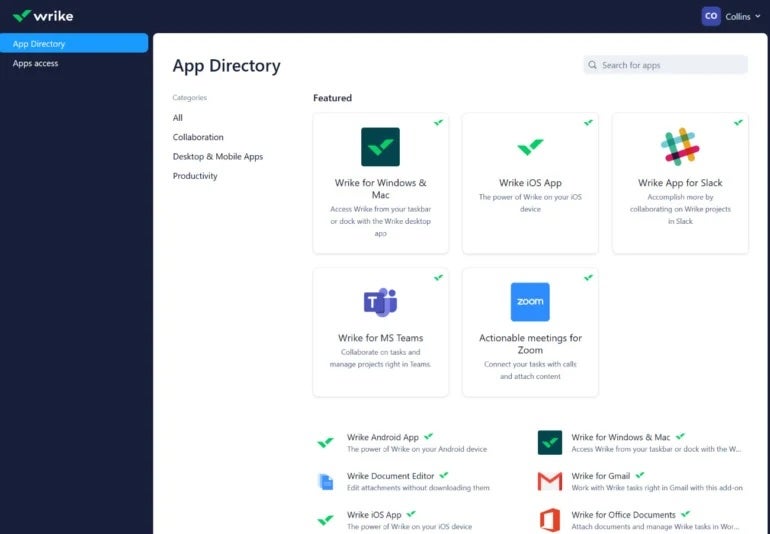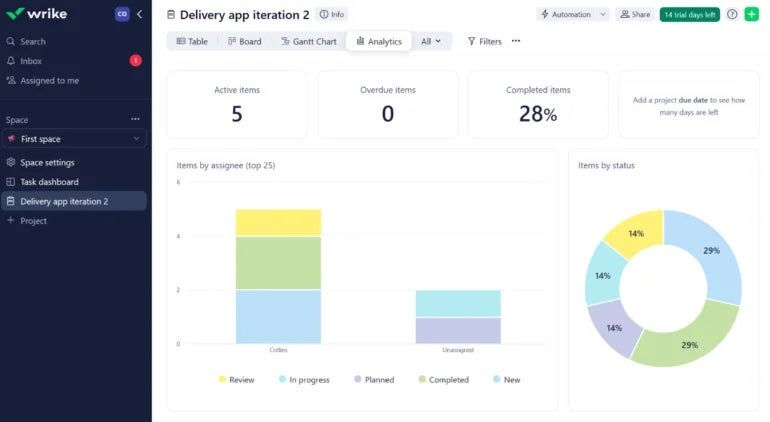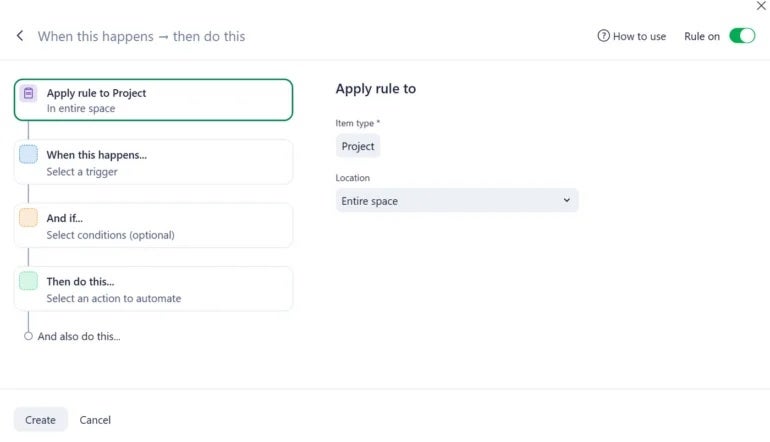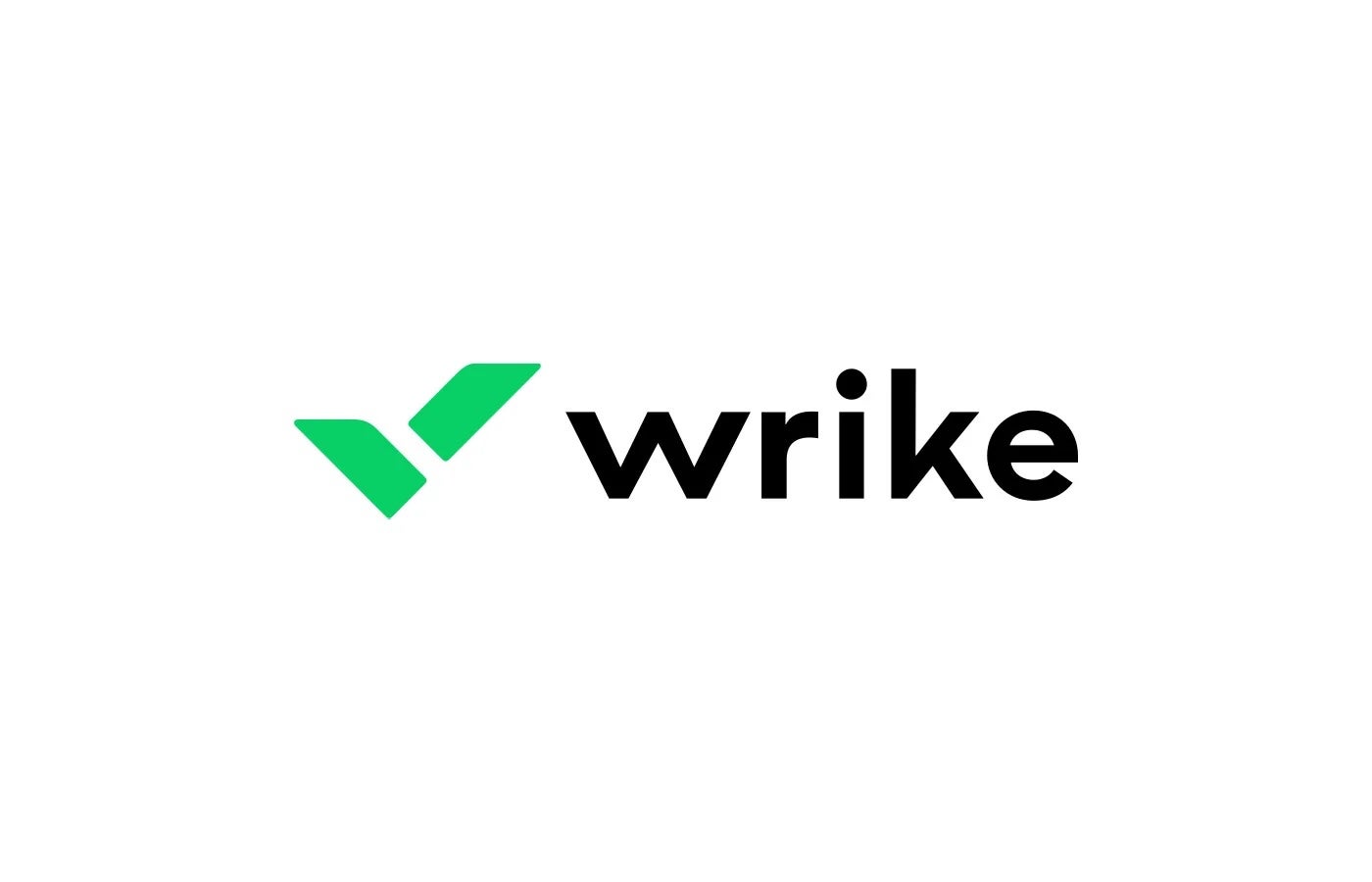Wrike review |
|
|---|---|
| Rating | 4.6/5 |
| Starting price | $10.00 per user per month |
| Key features |
|
Wrike is a full-featured project management application suitable for medium to enterprise-level organizations. It’s offered as a software-as-a-service tool with a desktop version and mobile app. The user-friendly interface makes it easy for users to transition from spreadsheets to a more visual and intuitive experience.
This Wrike review evaluates the platform integration capabilities, pricing plans, pros, cons and standout features. But if Wrike isn’t your ideal choice, we’ve offered a few alternatives as well.
Featured Partners
What is Wrike?
Wrike is a cloud-based collaboration and project management tool that enables users to create, assign and prioritize tasks. It also allows managers to track team member’s progress and manage tasks and project deadlines.
Hands-on Wrike review results
To write this review, we weighed Wrike across five key criteria with over 25 subcriteria, evaluating its features, pricing, customer support and ease of use.
| Criteria | Score |
|---|---|
| Features | 5/5 |
| Pricing | 3.5/5 |
| Ease of use | 5/5 |
| Service and support | 5/5 |
Wrike pricing
Score: 3.5/5
| Pricing Plan | Cost/month (per user, billed monthly) | Cost/month (per user, billed annually) |
|---|---|---|
| Free | $0 | $0 |
| Team | $10.00 | N/A |
| Business | $24.80 | N/A |
| Enterprise | Custom quote | Custom quote |
| Pinnacle | Custom quote | Custom quote |
Free
With Wrike’s free plan, you get unlimited users and projects with a maximum storage space of 2GB. The unlimited users in a free plan is unusual for top project management software. In the free plan, you also get access to artificial intelligence features such as AI subtask creation.
Team
The Team plan, which starts at $10.00 per user per month, is ideal for small teams that need basic project management tools for collaboration and project planning. In this plan, Wrike offers customizable dashboards, interactive Gantt charts, 50 automations per month, use case templates and other features.
Business
The Wrike Business plan is priced at $24.80 per user per month. You get access to plenty of advanced project management tools in this plan, including calendar views, time tracking and several add-on features, such as Wrike Two-Way Sync with Jira and GitHub.
Enterprise
The Enterprise plan has customized pricing based on your project management needs. The new features in this plan include advanced security and scalability tools. This includes single sign-on two-factor authentication, admin permissions and customer access roles.
Pinnacle
The Pinnacle is the most advanced plan offered by Wrike. Like the Enterprise plan, Pinnacle is offered as a custom quote based on your team’s project management needs. With it, you get complete access to all of Wrike’s features, including advanced resource planning tools, a team dashboard that provides insights into team productivity and an executive-level collaboration space with extra security.
Core Wrike features
Score: 5/5
Wrike boasts a long list of features, but the following stand out as the strongest and most useful for many users.
Wrike Integrations
Wrike integrates with over 400 popular applications, including email clients, customer relationship management, file storage, messaging apps and more. Some of the most popular third-party integrations (Figure A) include Google Docs, Salesforce, Zoom and Tableau.

In addition, Wrike offers an easy-to-use application programming interface to easily and securely connect tools and workflows to third-party applications.
Team collaboration feature
Wrike’s collaboration feature offers a way to provide clients or other users access to Wrike with limited rights. You get a maximum of 20 collaborators or 15% of your license count — whichever is greater.
Wrike’s team collaboration allows team members to work together more effectively by providing a centralized hub for communication, task management and project coordination. Team members can easily assign and track tasks, share files and updates, and collaborate on project timelines and goals in real time. This helps to ensure that everyone is on the same page and working towards a common objective.
Team collaboration in Wrike also includes features such as commenting, tagging and mentioning team members, allowing for seamless communication and feedback exchange. Collaborators can change task status and comment on or view projects, tasks, spaces, folders and other information based on how the settings are configured for collaborators’ rights.
Advanced reporting and business intelligence
Using the advanced reporting (Figure B) and business intelligence features of Wrike, you can create customer analytics boards or use prebuilt templates. The reports and charts are updated automatically based on the most recent data, so you won’t have to worry about recreating the reports or manually pulling new data.

Resource management
Wrike’s resource management capability allows users to allocate, track and manage resources within their projects effectively. Project managers can easily view and update their team’s availability, workload and skills to ensure that tasks are assigned to the right people at the right time. They can also monitor resource utilization and make adjustments as needed to prevent overloading individuals or teams.
Workflow automation
You can save time by using the workflow automation (Figure C) tools offered by Wrike. This means you can automate most recurring or repetitive tasks to boost your team’s efficiency. Using this feature, you can even automate task approvals, notifications and status updates.

Multiple views
The table view provides a structured list of tasks with customizable columns for easy organization and tracking. The kanban board view provides a visual representation of tasks moving through different stages of completion, making it easy to see where tasks may be getting stuck.

The Gantt chart view offers a timeline-based visualization of tasks and dependencies, helping teams plan and schedule their projects properly. The calendar view provides a visual representation of project timelines and deadlines, making it easy to see upcoming tasks and milestones. By offering multiple project views, Wrike enables teams to manage their projects in a way that suits their workflow and preferences.
Data security
Wrike includes powerful security tools such as the Wrike Lock, which is an additional layer of encryption on top of the standard encryption for all workspace data and files. Users can also avail of encryption key management for data managed by third-party services or clients.
Marketing insights
This is an add-on feature offered by Wrike for digital marketing teams. You can integrate digital ad campaigns into Wrike to access performance metrics for your marketing campaign.
Wrike ease of use
Score: 5/5
For all the advanced features offered by Wrike, it’s quite user-friendly and adaptable. It’s not only easy to use but also easy to set up. Wrike’s interface is well organized, making it easy for users to locate and use various functionalities. It offers a free plan to introduce users to the interface and features, along with a 14-day free trial of the premium plan. For the free trial, it’s easy to sign up and start managing projects, as Wrike doesn’t ask you for credit card information, so you can set up projects as quickly as possible.
Wrike customer service and support
Score: 5/5
Wrike received a perfect score of 5 out of 5 for their quality support. The company offers various resources to help you resolve issues or answer any questions.
Knowledge base/help center
Wrike’s knowledge base and help center provide valuable information and resources to resolve any issues. The knowledge base covers a wide range of topics, from general getting-started guides to more specific ones, like account management, communication and collaboration and security and privacy. Wrike also offers a community forum where users can ask questions, share ideas and connect with other users to address any issues or questions.
Service channels
Wrike offers various support channels. However, the type of support or channels you can access depends on your subscription plan. Free users can access support via web form channel and support is limited to working hours and days. Premium users can access 24/7 support with the flexibility to contact support teams via various channels, including web form, help center chat, dedicated phone line and workspace chat channels.
Live training
Wrike offers monthly webinars, which include demo, Q&A, on-demand sessions, ask the expert and best practices, where you can learn directly from the experts at Wrike and have your questions answered in real time.
Wrike’s Security
Wrike takes security very seriously and has implemented several measures to ensure the protection of its users’ data.
- Data encryption: All data transmitted between you and Wrike’s servers is encrypted using TLS protocol 1.2 with a preferred AES 256-bit algorithm in CBC mode and 2048-bit server key length to ensure data privacy and security.
- Role-based access controls: Wrike allows you to set granular access controls, specifying who can access certain projects, folders and tasks within the platform.
- User authentication: The platform uses industry-standard user authentication methods such as passwords, multi-factor authentication and Single Sign-On (SSO) to verify the identity of all users accessing the platform.
- Compliance certifications: Wrike maintains compliance with industry standards such as SCCs, GDPR and HIPAA, ensuring that your data is handled in accordance with the security and privacy standards.
- Wrike Lock: For extra security, you can opt for Wrike Lock, which allows you to manage your own encryption keys, giving them complete control over the encryption of your data.
Wrike pros and cons
| Pros | Cons |
|---|---|
| Wrike is easy to use with an organized and logical user interface. | Advanced security features are only available in the Enterprise plan. |
| There are a variety of integrations, so you can expand Wrike's functionality. | Wrike is expensive compared to other competitors. |
| Good support content and resources are available, so users can learn how to use Wrike's tools. |
Best uses for Wrike
Wrike is a versatile project management software used in various industries and for different purposes.
Project management
With Wrike, project managers can streamline workflows, automate tasks, predict risks and easily optimize resources. Wrike’s prebuilt templates give professionals across various industries a head start in planning and executing their projects.
Resource management
You can use Wrike to allocate and track your team’s resources. With Wrike, you can easily assign tasks to team members, set dependencies and deadlines and monitor progress in real time. The software also provides features such as workload management, resource capacity planning and time tracking, enabling better resource allocation and optimization.
Process optimization
Process optimization is an integral part of project management. Wrike offers many features that can help you optimize your processes. The tool allows you to customize your workspace, automate your workflows, communicate in real time and create detailed reports.
Wrike alternatives and competitors
While Wrike is outstanding an project management software, it might not work for everyone. For example, it might be too expensive for some users or might not offer the required features. In our research for the top project management solutions, we found a few worthy alternatives to Wrike, including Asana, Trello, monday.com, Microsoft Teams, Zoho Projects and Microsoft Project. In the following, we have compared the top three alternatives to help you determine the best option for your organization.
| Wrike | Asana | Trello | Monday | |
|---|---|---|---|---|
| Starting price (per user month-to-month) | N/A | $13.49 | $6 | $12 |
| Starting price (per user per month, billed annually) | $10.00 | $10.99 | $5 | $9 |
| Free trial limit | 14 days | 30 days | 14 days | 14 days |
| Free version available | Yes | Yes | Yes | Yes |
| Integrations | 400+ | 100+ | 200+ | 1,000+ |

Asana
Wrike and Asana offer excellent project management features, including multiple views and automation. However, Asana lacks native time-tracking capabilities, so third-party integration will be needed if you need to use that feature. Another advantage of Wrike is that it has a live editor mode that allows teams to edit and update tasks in real time.
Comparatively, Asana offers better customization, but the reporting feature is lacking. On the other hand, it provides greater simplicity, so users not experienced in project management might find it easier to start with Asana.
For a closer look, check out our in-depth comparison of Wrike and Asana.

Trello
Trello is well-known for its outstanding free plan, which is loaded with features, as well as its Kanban-style board system, which is extremely easy to use. That said, Trello is missing some key project management features, such as native-time tracking.
While Wrike is more suited for larger organizations, Trello is better for individual users, freelancers and smaller businesses looking for an accessible system to get started.
For a closer look, check out our in-depth comparison of Wrike and Trello.

monday work management
monday work management offers everything you would expect from leading project management software. It’s comparable in features to Wrike and both software offer excellent usability through an intuitive user interface.
If you’re looking for a Wrike alternative that offers hyper-specific solutions right out of the box, such as modules specifically designed for managing marketing campaigns, then monday work management would be a more suitable application for your needs.
For a closer look, check out our in-depth comparison of Wrike and monday work management.
Wrike review methodology
To evaluate Wrike, we used a combination of a hands-on review, reputable rankings, customer ratings, testimonials and other expert reviews. We evaluated Wrike based on five key rating criteria: pricing, features, ease of use, customer service and expert analysis. Our research methods include exploring the official website, analyzing customer reviews and feedback and testing the software.
We personally tested the Wrike platform to gain firsthand experience of its features and capabilities. This involves creating sample projects and tasks, exploring different functionalities, testing collaboration tools and assessing overall usability and performance. We also analyzed how Wrike compares to other competitors in terms of core features, advanced tools, usability, integration, customer support, security and pricing.




